Eshcholce among gardeners is also known as the "California Mac". Popularity in Dachnikov This field flower deserved thanks to undepair to care and abundant tender blossom, which begins in the summer and continues until the autumn.
Content
Eshcholce: flower origin
The plant that is now thick inhabit the parks, squares and summer cottages, came to us from North America. This culture refers to the biological family of poppies, which has another dozen species of wildflowers.
There is a legend, according to which, in the XVII century, Spanish sailors, swimming on the shore of modern California, for several dozen miles wondered on the shore of an amazing glow. Deciding that they found gold mines, the Spaniards landed ashore, where they found the endless fields of the yellow-gold egsholi. To this day, in Hispanic countries, this flower is not different as the "bowl with gold".
In Russia, the plant was named after the Russian botany and the naturalist Johann Eshcholz, who from the next expedition to the north of the American continent brought seeds of this wonderful flower to our country.
Eshcholce: type description
In order for the plant to feel comfortable, it needs to be planted in sandy soil, which is well drained. Eshcholovation is needed soil neutral or weakly acidic reaction. If you know that the acidity of the soil is high, then the plot provided for the landing of the estuary, adding to the soil of 200 g of Dolomite flour per 1 m 2 (can be replaced by 2 cups of wood ash).
For planting a flower, choose a solar place located on an elevation so that there is no water stagnation (from dampness and shadow the plant dies).
The species characteristics of California Maka are:
- herbaceous bush perennial plant;
- in height reaches 40 cm;
- it has thin shoots;
- openwork leaves of jet-green color;
- single flowers can reach 9 cm in diameter;
- flowers terry or simple (depending on the variety);
- flowers of various shades;
- bloom throughout the summer;
- the period of life of one flower is not more than 4 days;
- at night and during the rain, flowers are closed.
Eshcholce: Growing from seeds
Grow the Eshcholce most often from the seeds. You can sow autumn or spring - both ways are suitable for the plant. Flowers planted in October will bloom in early May. The emerging shoots will need to be conserved to remain only the strongest plants. The advantage of autumn landing is that in the winter soil the seeds will pass natural stratification - therefore, almost everyone will give strong and viable shoots.
If for some reason you decided to postpone the planting of flowers until spring, then it follows the stratification, putting a bag with the seeds of the Eshcholving to the bottom (vegetable) of the refrigerator box for the entire winter. Spring landing at the end of April or early May (depending on the climate in your region), and in two weeks the plant will delight you with the first shoots, and a month after sowing, flowers will appear.
So, regardless of the season, landing is carried out as follows:
- First, find the appropriate place to plant anxolusion: it should be dry and sunny plot, soil on which sandy.
- Stir seeds with sand - this will be enough to prepare for sowing.
- Make shallow grooves in the ground and drink the Eshcholce.
- Due to the fact that the seeds of the plants are very small, when landing, they need to go a little into the ground so that the soil has seal around them.
- After landing, it is necessary to inspire the soil: it will not give her too falling and hardening (through too tight soil the sprouts may not break through). The spring landing is mounted in a layer of peat, and autumn - dry leaves.
- When shooters have been reached 12 - 15 cm in height, ride them, leaving a distance of 20 cm between colors.
Eshcholce: Cultivation of seedlings
Instructions for the cultivation of Eshcholzia are most often offered to grow it from seeds. However, many flowerflowers share the experience of growing seedlings of this culture and see a lot of advantages.
Eshcholce has a rod-shaped root system, and, it means, when transplanting seedlings in the ground, the roots of the plant are easy to damage. Therefore, in order to grow seedlings of culture, you will need to take advantage of peat pills.
- Put peat tablets into a deep container (in one layer) and pour them with water.
- When the pills are poisoned with water, drain her remnants.
- For each peat tablet, put one sevenxullation seeds (use toothpick for this - the plant seeds are very small).
- Put seeds with a small amount of land (use a special soil mixture for growing seedlings).
- From the sprayer, spray "Circling" with water.
- Cover the container with sowing glass or tight film.
- Keep the container at room temperature.
After 10-12 days the first sprouts will appear. As soon as you notice germination, transfer the container with seedlings to a bright place (better to put by the window). And also remove the glass (or film) - it will no longer need it. At this stage of growing seedlings, the air temperature needs not lower than + 20 ° C and watering as the soil drying.
After 14 days after the appearance of Roshkov, adopt their special fertilizer for seedlings (observe the proportions specified in the instructions).
Before planting in the ground (the end of April - beginning of May), the seedlings need to harden. To do this for 15-20 days before the expected landing on a constant, start to make container seedlings in a cool place (balcony or veranda) on a daily basis for a few hours. If the hardening of plants carried out correctly, then after landing in the open ground, they will be able to endure short-term lowering the temperature to -5 ° C.
Seedlings are planted in the prepared soil with peat pellets. Make a hole for planting at a distance of 30 cm from each other to freely grow flowers. After landing the well into the ground water the seedlings.
Eschscholzia: cultivation and maintenance
Caring for plants is absolutely simple. Even the lazy gardener to do the task.
- Watering. Eschscholzia likes dry soil, so water it often not necessary. Typically, a culture that lacks moisture, which provide rain. However, if the summer is too dry and no rain, then gradually watered flower bed, when you notice that the soil completely dry. Watering the plant should be in the evening, when all the flowers are closed.
- fertilizer. It is worth remembering that in organic fertilizers eschscholzia not need. But mineral fertilizer should take place before the flowering period. As fertilizer use nitrophosphate or composition of colors. Make the solution rate of 1 tbsp. l. fertilizer per 10 liters of water. Pour 2 L under every bush eschscholzia.
- It is necessary to loosen the soil on a regular basis - for eschscholzia important supply of oxygen to the roots.
- After the flower withered, immediately delete it. This will allow the plant to bloom after a few days with a new force. Also, do not leave the bushes in the boxes with seeds and old shoots.
Eschscholzia: seed collection
Repot the plant for the next year is not necessary. Eschscholzia fine breeds self-seeding, and going through the winter. So in the next year, your bed will be even more magnificent.
But if you need to for whatever reasons, to collect the seeds eschscholzia, do the following:
- once the plant bud, put him loose gauze bag - under it will be ripening seeds;
- after flowering in the culture produced fruit - capsule with seeds;
- they ripen in 25-30 days after the end of flowering;
- ripened box will dry and dark;
- cut off the box, and then shake out the seeds therefrom onto a sheet of blank paper;
- leave to dry in the room;
- when the seeds dry out, put them in a paper bag and place in a refrigerator (in the vegetable drawer);
- spring such seeds are ready for planting;
- plant seeds retain properties up to three years.
Estimation: Popular varieties
In nature, there are 12 plants, which, like Eshcholization, belong to the poppy family. In our country, 2 types are common:
- Embolzolization turf is an annual compact plant (up to 15 cm in height). Openwork leaves are collected in a rosette, over which bright yellow flowers develop (about 3 cm in diameter).
- California Eshcholce - the most famous appearance. It is quite high (up to 40 cm) a perennial herbaceous plant. It has carved leaves and straight thin stems that form a flutter shrub. Flowers from May to October. Flowers are large (9 cm in diameter), white, yellow, orange or creamy color.
However, on the basis of the esthemium by California breeders, many hybrid decorative varieties are derived, which differ in color, the form of flowers and resistance to various diseases. The most popular varieties:
- "Apple color" - has very large terry flowers of bright pink color, very reminiscent of the flowering of an apple tree;
- "Peach ice cream" - terry flowers of tender peach color;
- "Strawberry fields" - semi-world flowers with a very interesting coloring (from red on the edge of the petal to yellow in the flower core);
- "Fruit explosion" - has corrugated semi-world flowers, the painting of which can be red, yellow or crimson;
- "Mikado" - high bushes with non-nice flowers of saturated yellow color and with a bright orange core;
- "Ballerina" - has high-level flowers of large diameter (about 15 cm).
Eshcholce: Diseases and pests
Even the most unpretentious and hardy plant can be affected by a disease or pest. Regularly inspect the plants in order to help them get rid of the problems in time, otherwise the whole culture can perish. The main diseases of the Eshcholce:
Bob word Usually appears at the beginning of summer and begins to actively multiply on the leaves of the plant, pulling the juices from it. The preparation "Commander" will help to fight the pest, which need to make a plant according to the instructions.
Cute tick. This pest appears on the Eshcholving bushes in dry days. The rest of the pest is difficult to consider the naked eye, however, on the stalks of the plant you can notice a lightweight cobweb (hence the name of the pest). The parasite develops very quickly: in a few weeks it can cover all the plantations. The web tick breaks down the leaves and stems, sucking juice from them, so the plant weakens, loses the ability to photosynthesis and easily infects fungal diseases that lead to his death. As a result, the plant is covered with a plurality of white specks (mainly on the bottom of the leaves). To combat a spider tick, you can apply:
- at the initial stage of the lesion - the solution of the economic soap (they spray all the above-ground part of the plants);
- in the complex case - acaricides (drugs act only on ticks, but not on its eggs, so re-processing is required in a few days).
Drop the roots and the ground part of the plant. It occurs in the case of an oversupply of moisture (strong rains, excessive watering or unsuccessfully selected raw landing place). To help the plant, remove all the affected areas. And if the roots are spoiled - then the whole bush is entirely.
Puffy dew. This fungal plant disease is very common. The shoots and leaves of the plant are covered with a white bloom (this is the mycelium of a malicious mushroom), which captures an increasing area, and then darkens. When the spores of the fungus are ripening, drops of liquid appear - that is why the disease got the name "Mutemy Rosa". In order to recognize the appearance of fungus on time, inspect the lower part of the plants (the development of the disease begins from there). Plants affected by mildew, cease to bloom and die from exhaustion. Fight with the disease can be folk methods without the use of aggressive chemicals:
- calcined soda (4 g), the soap is economic (4 g) - dissolve in 1 liters of water; spray 2 times with an interval of 7 days;
- wood ashes (150 g) pour boiling water (1 l) and insist for a day; Add a household soap (4 g) and spray 2 times with an interval of 7 days.
Growing Eshcholving: Video
Grade Eshcholving: Photo

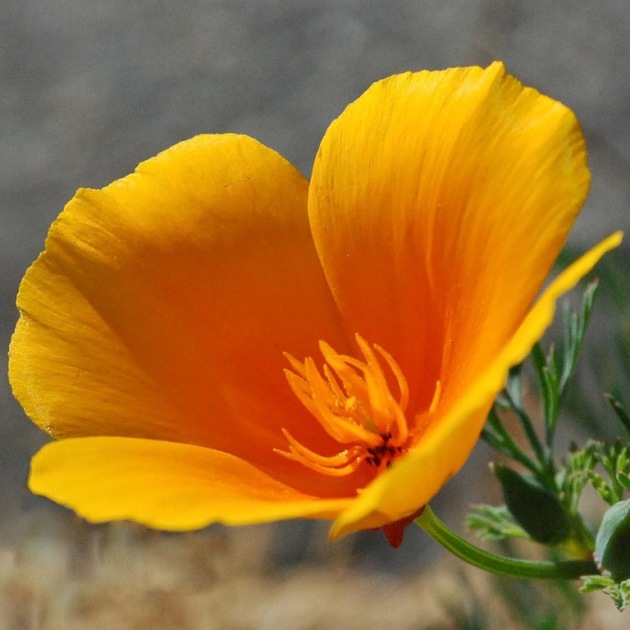
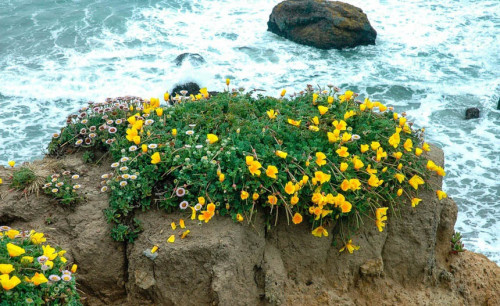
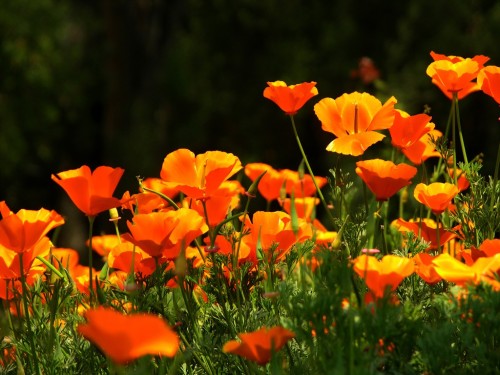
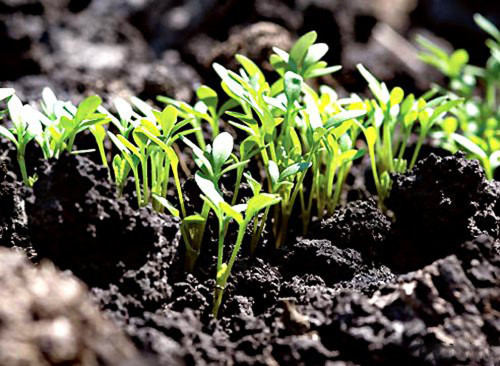

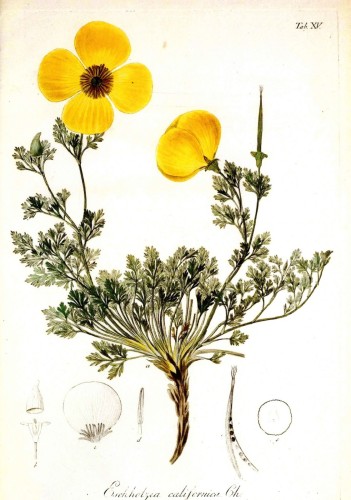
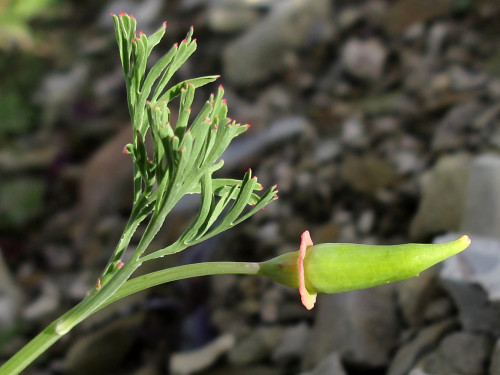
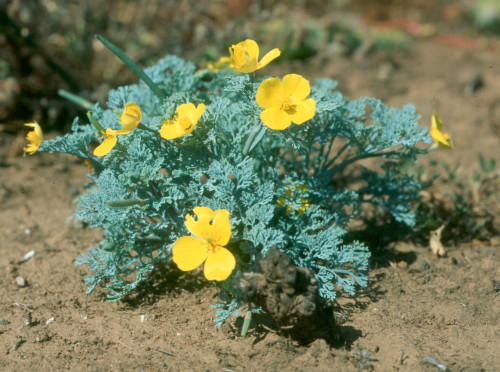
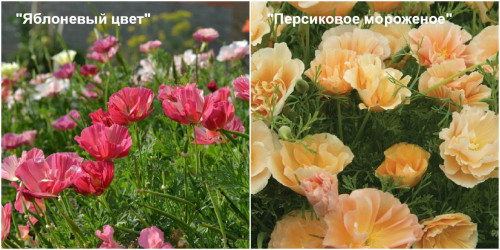
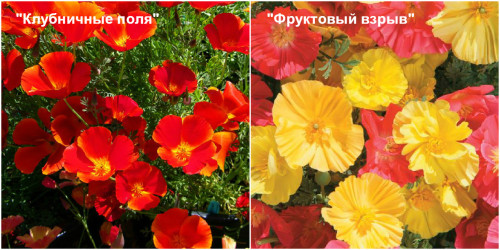
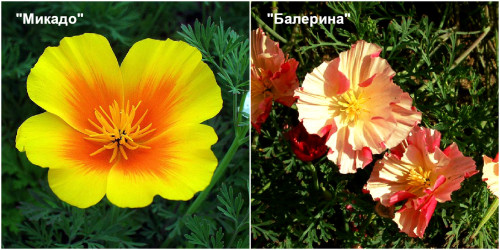
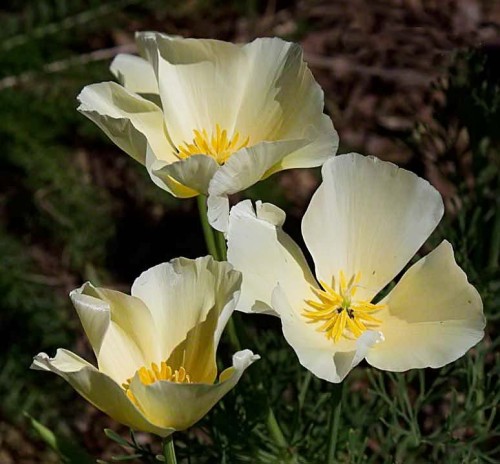
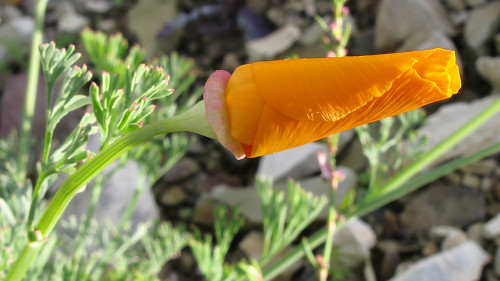
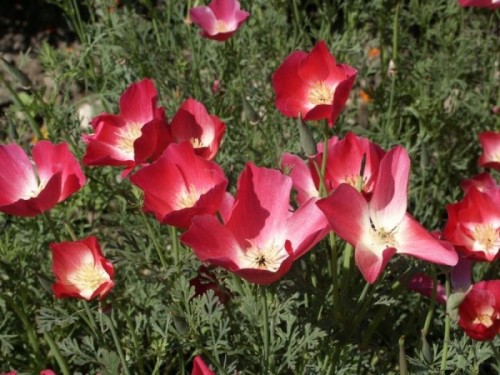
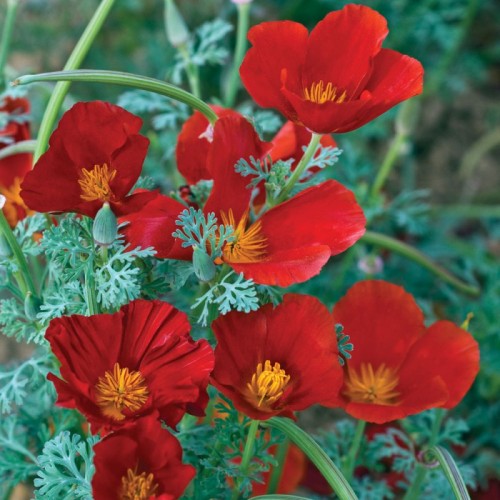

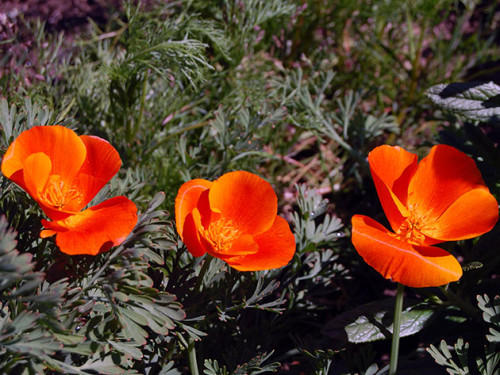

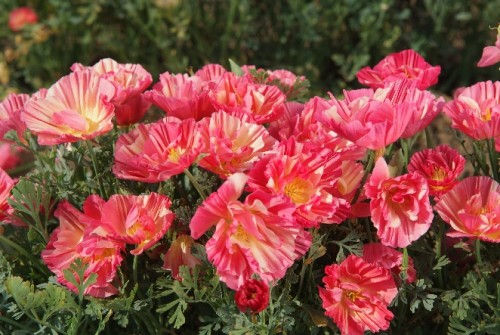
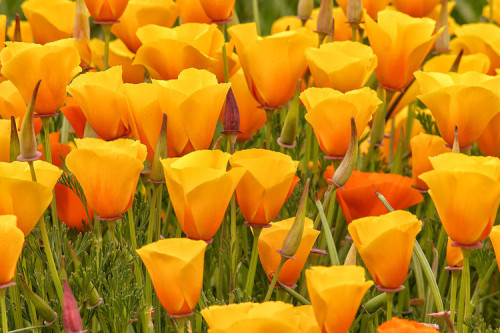
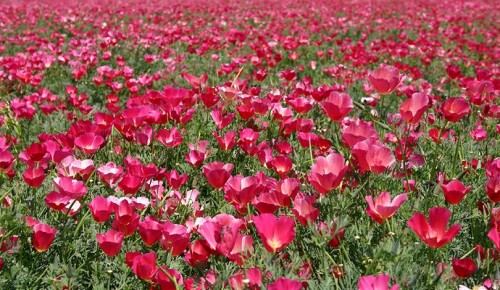
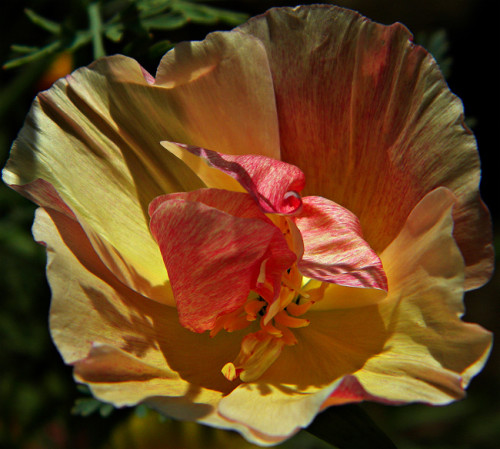
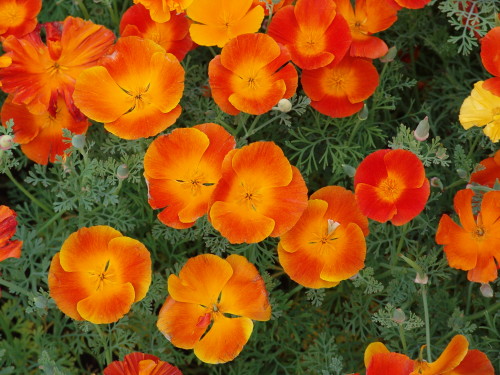
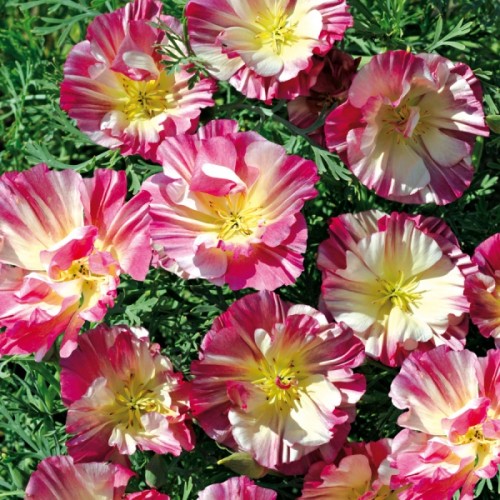
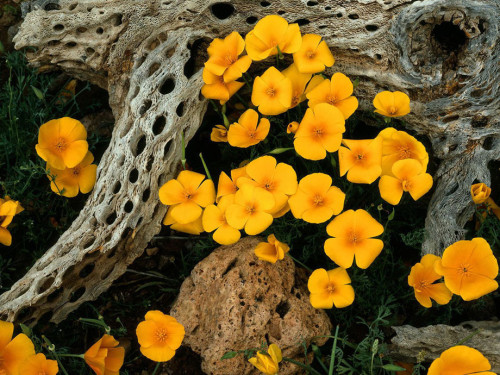












 Start a discussion ...
Start a discussion ...